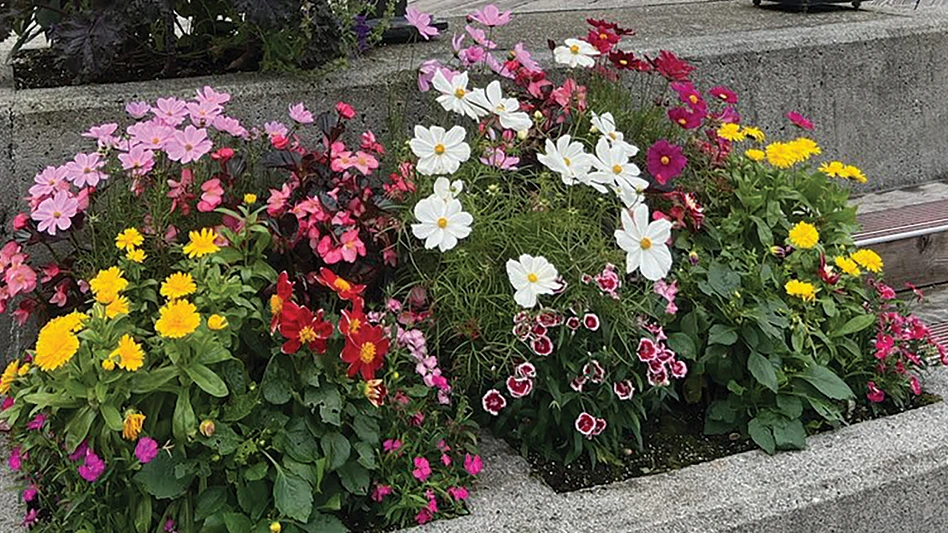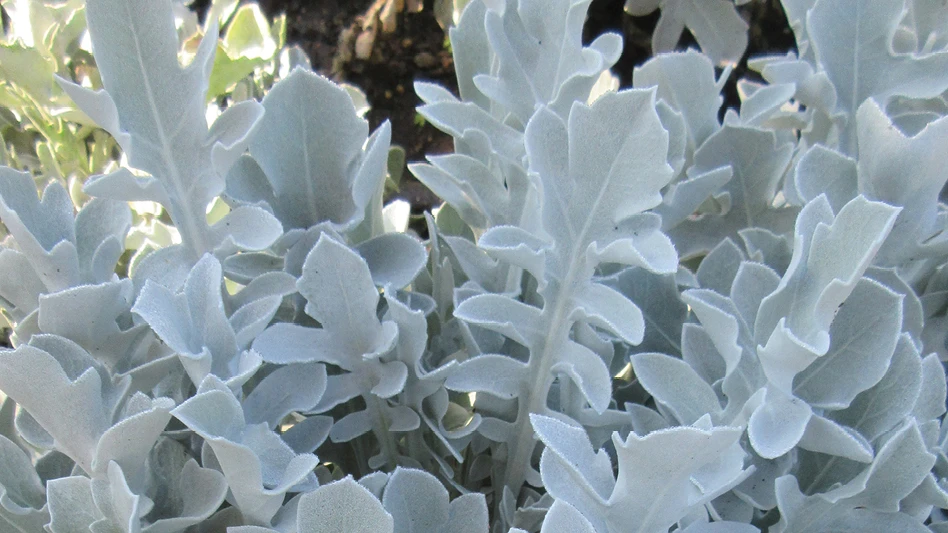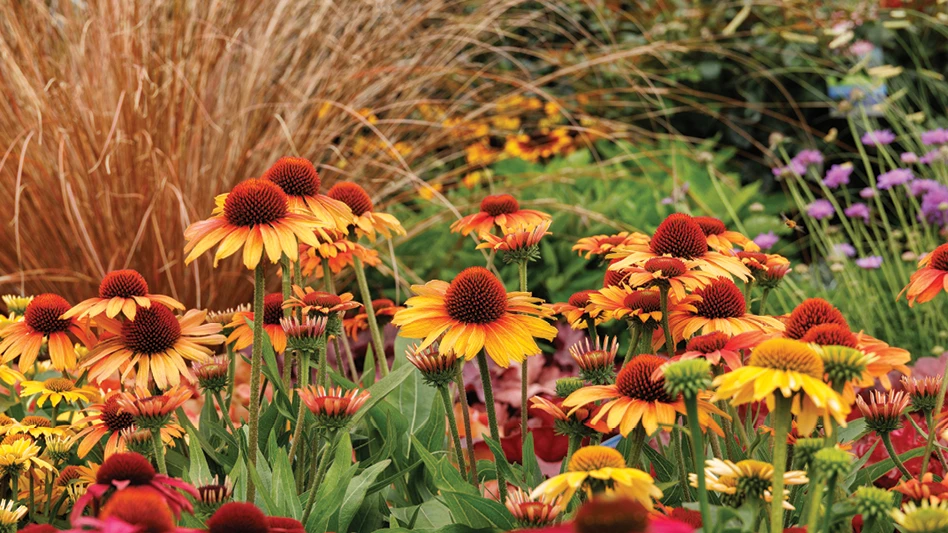
Photos courtesy of Indoor Ag Con

The show that launched back in 2013 has, just like the controlled environment ag world, gone through a bit of a coming-of-age period. Attendance in Vegas was up 82% from the Orlando show with 800-plus joining the group at Caesars Forum over the two days of networking and programming.
The trade show expo floor also expanded – by 60% more booths than the Orlando show – and 77 speakers participating in 21 panel discussions and 3 CEO keynote sessions rounded out the week’s educational track.
Here’s a few tidbits from last week in Las Vegas:
Talkin’ CEA genetics
One of the areas in CEA that has sort of lagged behind the development curve that has accelerated innovations in LED lighting and climate control is on the seed genetics side. While seed breeders have been releasing field varieties and even greenhouse-specific cultivars to the market for decades now, there hasn’t been the same level of resource investment in getting CEA-specific varieties into the hands of indoor farmers.
Rather, for much of CEAs existence, growers are having to pick and choose varieties bred in other production systems and trial them in their own setups. Obviously, it would be ideal if there were varieties that have already been trialed in commercial indoor and vertical farming production systems at the breeder level.
Enter Dr. John Purcell and his team at Unfold Bio, which is Bayer’s vertical farming seed spinoff business which launched in 2020 via a joint venture with Singapore-based investment firm Temasack. I had the chance to catch up with Purcell in Las Vegas to discuss where the effort stands today.
“What we recognized (at Unfold) and I think the market recognized is that, when you have these incredible growing systems that are really unique and distinct and you’re moving toward protected culture in a way that controls every aspect of the environment, you’re going to need seeds that have been developed for that,” Purcell told me. “You’re going to need testing and trialing and breeding data to actually find ways to produce solutions that address the challenges indoor farmers are facing.”
Now about 18 months into Unfolds journey, the seed startup launched its Innovation Partner Program at the show.
“What that’s about is, when you think about any grower, they need to have data around ‘How will that seed work in my system,’ right,” he explained. “Now, some of that they do want to handle internally, but it’s much better if the seed company can come in and give them (some of) that data. You can be very transactional in the seed business, but this program is looking for a little deeper relationship where we can share all that data on how our varieties are performing, and then we can really build on that relationship by having the growers really inform us of how we run our (seed) program.”
Currently, Purcell shared, Unfold has five crops in it’s CEA seed portfolio – lettuce, spinach, tomato, peppers and cucumbers. He says that two of the most important genetic traits CEA cultivars should feature are fast maturity rates and uniformity for ease of mechanical harvesting.
With most of the market focusing on microgreens indoors – and for good reason, they feature fast cropping times and easy to deal with plant architecture – Purcell thinks CEA must make the leap to fruiting crops to take the industry to the next level.
“For us and for the industry to really take advantage of all the great investments that have been made, we’ve got to make the leap to fruiting crops,” he said. “And berries, that’s the other one. You think about tomatoes and berries, sometime you experience these amazing tasting strawberries and tomatoes, and then other times they look the exact same but the Brix aren’t there, it’s not as tasty as you’d like it. With vertical controlling that environment and having that consistency year-round, we can really deliver a consistency in the supply chain, and that’s huge!”
Talkin’ knowledge transfer
urban-gro is a Colorado-based CEA design firm with experience in over 500 CEA facilities already under its belt. Of course, having launched in legal cannabis’ hot bed, much of the group’s experience is in that crop, but they’re moving into the CEA produce space with the same commitment to highly efficient, fully integrated indoor production facilities.
“I think what separates us is our IP – which is our people – we have close to 100 employees and two-thirds of our people are architects, interior designers, a variety of different engineers, plant scientists, and horticulturalists,” Brad Nuttras, CEO, told me.
Nuttras says urban-gro is coming off some really good years in the cannabis space, and for the last year-and-a-half the company has been rolling out it’s indoor food vertical farming play. It’s all about using that knowledge and know-how that they’ve built up working in legal cannabis and expand that into CEA.
“In an indoor facility, regardless of the crop, the only difference is the logistics – how they move the crop around,” Nuttras explained. “It’s all basically the same Dutch-based environmental control systems and LEDs.”
Right now, the company offers full construction document services for growers, and the hope is to soon acquire a construction management company that will enable urban-gro to add in the design and build pieces to the puzzle.
“So, whereas large greenhouse growers have to go to Europe or go to one of these huge design-build firms in the U.S. that is focused on indoor and also greenhouse, we’re going to be setup to target those 20,000-50,000 square foot facilities regardless of crop-type,” Nuttras shared.
The firm recently made some headway in that regard in Europe, where Nattrass says they signed a deal in Q4 to design and build out up to 20 indoor vertical farms throughout Europe. He warns that the facilities “won’t be an AppHarvest or anything like that” but instead will be smaller footprint facilities located near or even in food service, hotels, and restaurants close to urban population centers.
“The next stage for us is just to continue to grow with acquisitions and just continue building out our team,” Nattrass said. “Now being listed on the NASDAQ and being able to offer our employees stock options and things like that, it’s really helped us to retain all of our talent, which, again, is our differentiation point.”
A fertility warning
Just days before we headed to the desert for Indoor Ag Con, the world watched in horror as Russian forces invaded nearby democracy Ukraine. With agriculture being such a globalized marketplace in the 21st century, there was sure to be some talk at the show about the conflict and how it will likely destabilize a region that both grows and exports a ton of row crops to the rest of the world, as well as supplying farming and energy inputs globally to agriculture markets.
Speaking on background with one of the fertilizer reps in attendance, the rep cautioned that the situation in Eastern Europe – along with the trade-blocking sanctions put in place by NATO countries to punish the Russian aggression – could make sourcing fertilizer later this season more difficult than usual for North American growers. And they shared that goes for N, P, and K across the board, as well as some micros that are sourced throughout the Baltic states as well.
His advice? The same thing you likely heard during the COVID-19 shutdown and subsequent supply chain disruptions: get in contact with your fertilizer rep today and find out how they plan on managing the situation, and if they do foresee problems with sourcing later on in the season. If so, it might be time to start looking at other options here domestically in North America.
Just one more thing to think about as you round into the spring production season, I suppose…
Some cool stuff
Of course, no conference experience is complete without a swing around the trade expo floor. Here’s a few products being shown in Vegas last week that I found intriguing:
1. Agnetix water-cooled PHENOM vertical farming lighting system: According to the company, the PHENOM platform (launched in November 2021) includes integrated plant health sensors, canopy imaging technologies, the patented Agnetix liquid cooled hydronics system, and a computer-vision platform allowing the user to interface remotely. And the company says that the industry benchmark efficiency of the Agnetix system can deliver close-proximity 100% PAR light (photosynthetically active radiation) to multi-level grows with luminaire wattage of 375 and an astonishing PPE (photosynthetic photon efficacy) of up to 3.61µmol/J and precision dimming 100-1%. It’s one of the smallest footprint LED fixtures I’ve ever witnessed in person, which would make sense since growing vertically is a play to capture and use every single inch of space for plant production. You can learn more about PHENOM here: https://agnetix.com/product/phenom/
2. Ceres Certifications International was showing its in-house produce testing equipment at the show. Growers can purchase and setup a testing lab in their own operation, giving them the option to pre-test harvested produce for residues, contaminants, etc., prior to sending it out to a third-party lab for food safety audits. Additionally, by testing produce in-house, the grower builds and maintains ownership over their testing data. According to representatives at the show, the FDA is encouraged by operations that take proactive steps to resolve food safety issues before they make it into the food system. For more information on Ceres, head here: https://www.ceresci.com/
3. Cherry Creek’s Echo hanging basket irrigation system: This product would likely be a good fit for our friends over on the greenhouse ornamental side, but it’s also a fit in the indoor produce world as vegetable hanging basket planters have been trending a bit in recent years. Although the system is only new to me (it’s been on the market for 25 years-plus according to the company), Cherry Creek recently added what its calling the new REVERBTM touch screen PLC controller, which can manage up to 16 Echo systems from one central controller. If you’re doing hanging basket production indoors, it seems like this system would be a great way to ensure uniform watering throughout production. More info here: https://cherrycreeksystems.com/echo/
4. Percival Scientific’s SciBrite 8-color independently dimmable LEDs: As someone who tries to stay up on all the latest in the rapidly changing horticultural LED world, I must admit that Percival Scientific was a new name to me. According to the company, unparalleled lighting uniformity across PAR ranges, evenly mixed colors/spectrums and superior spectral control via it’s eight-color configuration capabilities make this reportedly first-of-its-kind colored LED lighting system a game changer over systems using linear arrangements of diodes. The group was also showing it’s research-grade automated plant growth chambers at the show. More information here: https://www.percival-scientific.com/product-category/scibrite-led-series/
5. GrowRebates.com: The guys at GrowRebates.com weren’t showing any particular product at the show, but I felt they should be included here after noticing the many representatives of local municipal utility providers were present at the show. Clearly, incentivizing the use of more efficient and sustainable technologies throughout the indoor farming space is an important undertaking for growers and regulators alike. The guys at GrowRebates.com offer consulting services to growers to ensure they are capturing all rebates and incentives available to them, and it’s not just with LED lighting, either. They can also help you find rebates around your HVAC and dehumidifying technologies, as well. Visit GrowRebates.com or give them a call at 855.LED.GROW to learn more.
Indoor Ag Con 2023 is set to take place February 27-28 in Las Vegas, Nevada, at Caesars Forum once again. Visit Indoor.Ag throughout the year for agenda updates and more.
Latest from Produce Grower
- AmericanHort accepting applications for HortScholars program at Cultivate'25
- The lights dim on Bowery Farming
- Ripe and ready
- Thank you(!)
- Targeted nutrients
- Harnois Greenhouses, Dubois Agrinovation partner on high tunnel greenhouse, irrigation combination
- Taming the greenhouse environment
- Wadsworth Control Systems creates Predictive Weather service for growers





